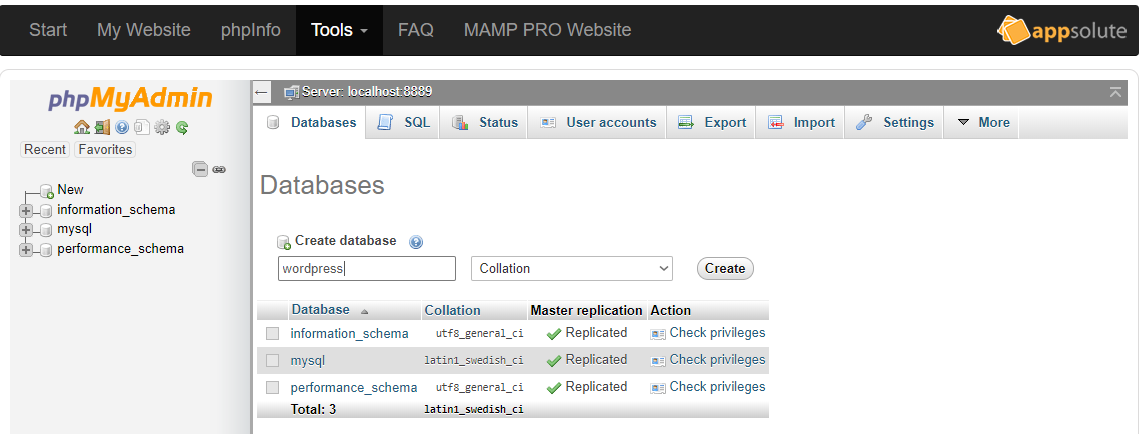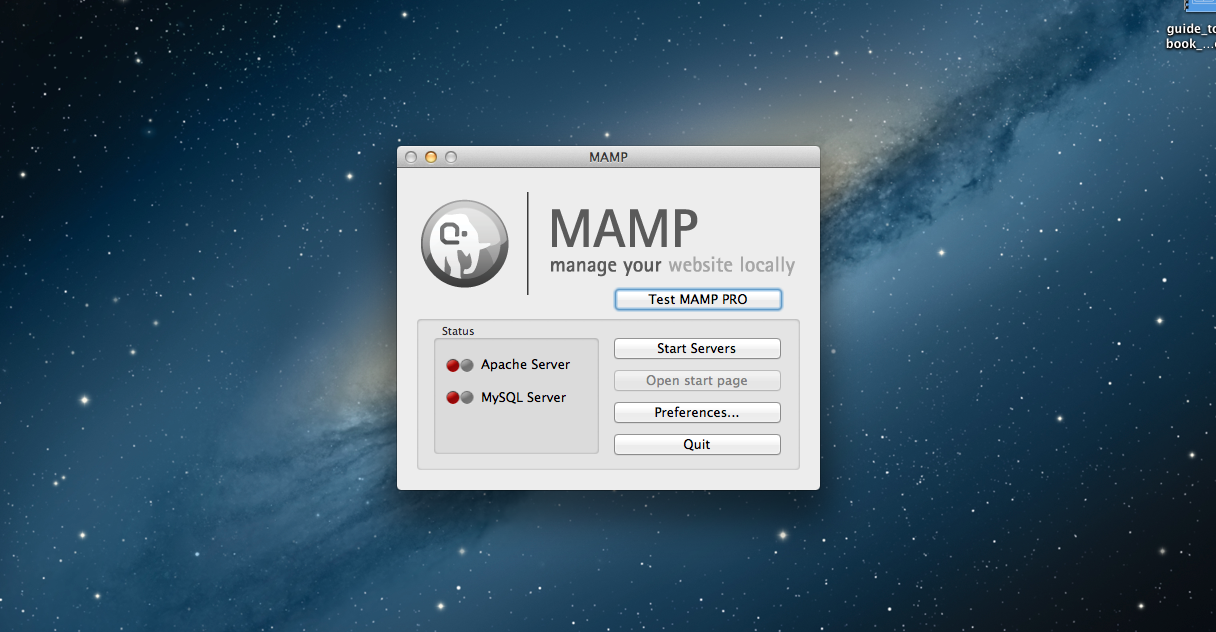

- #Mamp for windows how to open mysql upgrade#
- #Mamp for windows how to open mysql password#
- #Mamp for windows how to open mysql download#
One will be called db.php which will connect or website to the MYSQL (my standard query language) database and index.php, the page where the messages will take place.Ģ. The following steps will take place in your text editor of choice. Not null means that when a message is inserted into the database, the comment field in the database can not be empty (null non-existent). The 255 represents the max length for comment. ALTER TABLE message ADD COLUMN comments VARCHAR(255) NOT NULL The comment is type VARCHAR(255) this means that the comment will be text that cannot exceed a length of 255 characters. Picture 4 - Since the row for the comment was not originally there, let's add it with the ALTER TABLE command. You can see the rows and their data types by issuing this command. Picture 3 - Enter 'describe comments' to make sure that the table was created successfully. CREATE DATABASE message GRANT ALL PRIVILEGES ON message.* You may use your own username and password, just please do not forget it.

In order to be able to connect to the message database, issue the "GRANT ALL PRIVILEGES ON message.*" command. Creating the table with the essential rows is key to making sure the website has all necessary information.The table comments will have all the necessary information Picture 2 - In order to store information in the database a table needs to be created. Picture 1 - Once the database is created, you may enter the command 'show databases' to make sure the database was created successfully.
#Mamp for windows how to open mysql password#
Open command prompt and navigate to your mysql directory and type "mysqladmin -u root -p password." This command will ask for your password and for you to enter it again.Configure PHP and MySQL by making sure they are downloaded and you can navigate to their file location on your computer.(I am using WAMP since I have a windows based operating system) In this tutorial, we will be using MySQL.

If you need other options, we recommend visiting our installation forums for more information or checking out our list of optional technical requirements.The way to keep track of messages is to store them in a database. For more information, visit the XAMPP homepage

LAMP (Linux) - Most Linux distributions come with a pre-configured LAMP server.If installing on a local computer, there are a number of packages that will help you get set up quicker than individual installations: This is the minimum version which is guaranteed to work, older versions may work but are not supported.
#Mamp for windows how to open mysql download#
Download for IIS7.įor further assistance using Microsoft IIS, visit the Joomla! IIS forum. For information about using ISAPI, click here. Microsoft URL Rewrite Module - Required for SEO URLs only.For Microsoft IIS (depending on your setup) you may need the following: Support for Microsoft SQL Server was added for the 2.5 release 1.6 and 1.7 do not have this support. Note that the OpenID library is not compatible with PHP 5.3. Joomla! versions 1.5.15 and later are compatible with PHP 5.3.
#Mamp for windows how to open mysql upgrade#
Zend Optimizer 2.5.10 for PHP 4.4 also has serious bugs and you should ask your host to upgrade to a newer version. These releases have known bugs that will interfere with installation. In order to use SEO URLs, you will need to have the Apache mod_rewrite extension installed. As of Joomla! 3.5, support for MySQL's `utf8mb4` character set is added and used by default by servers which support it. Joomla! versions 3.5 and later are compatible with PHP 7. At 3.3, the minimum is raised to PHP 5.3.10. PHP 5.3.1 is required for versions 3.0 through 3.2.


 0 kommentar(er)
0 kommentar(er)
